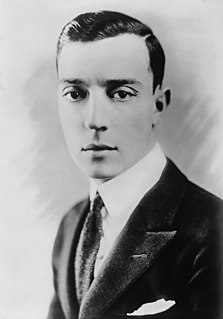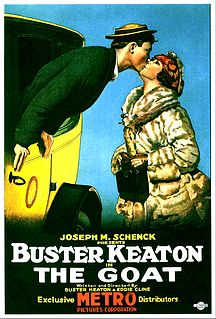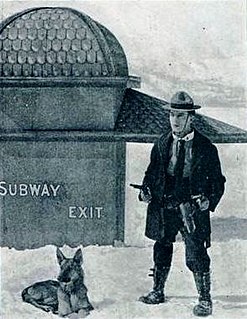Plot
A young man named Elmer answers an ad from a woman looking for a new husband. He arrives at the house, meets a young girl named Molly, and is immediately smitten with her. He discovers that the person who placed the ad was not Molly but her aunt. Molly's aunt sets Elmer and Molly to work washing dishes in the kitchen, but the clumsy pair end up smashing them. That evening, Molly's aunt plays the piano and sings boisterously, causing many objects in the house to fall and break despite Elmer's best efforts to save them. As Elmer tries to sleep that night, rain drips onto him from a hole in the roof. He climbs up on the roof to try to patch, but falls through it and lands on Molly's aunt's bed, propelling her through the bedroom window and into a muddy puddle. Elmer covers the giant hole in the roof with a blanket. The rain eventually fills it, causing it to burst, and sending the water flooding down onto Elmer, and then Molly's aunt on the floor below his. The aunt makes her way up to Elmer's bedroom and accidentally sends him out of the window and into the same muddy puddle. Elmer decides to spend the night in the barn instead. The next morning, he tries to tell Molly he loves her, but is repeatedly interrupted by her aunt. That night, Elmer is confronted by a ghostly version of himself who tells him that he needs to leave before Molly's aunt discovers he is in love with Molly. As he tries to flee, the aunt catches him and marches him at gunpoint to the Justice of the Peace. A quickie wedding is organised, but at the last minute it is revealed that the arranged wedding is for Elmer and Molly. As Elmer prepares to marry Molly, he sees the ghostly version of himself again, but chases it off with a gun, shooting it in the backside.

Joseph Frank "Buster" Keaton was an American actor, comedian and filmmaker. He is best known for his silent film work, in which his trademark was physical comedy accompanied by a stoic, deadpan expression that earned him the nickname "The Great Stone Face". Critic Roger Ebert wrote of Keaton's "extraordinary period from 1920 to 1929" when he "worked without interruption" as having made him "the greatest actor-director in the history of the movies". In 1996, Entertainment Weekly recognized Keaton as the seventh-greatest film director, and in 1999 the American Film Institute ranked him as the 21st-greatest male star of classic Hollywood cinema.

Steamboat Bill, Jr. is a 1928 silent comedy film starring Buster Keaton. Released by United Artists, the film is the final product of Keaton's independent production team and set of gag writers. It was not a box-office success and became the last picture Keaton made for United Artists. Keaton ended up moving to Metro-Goldwyn-Mayer, where he made one last film in his trademark style, The Cameraman, before his creative control was taken away by the studio.

The Navigator is a 1924 American comedy film directed by and starring Buster Keaton. The film was written by Clyde Bruckman and co-directed by Donald Crisp. In 2018, the film was selected for preservation in the United States National Film Registry by the Library of Congress as being "culturally, historically, or aesthetically significant."

Neighbors is a 1920 two-reel silent comedy film co-written, co-directed by, and starring Buster Keaton.

The Goat is a 1921 American two-reel silent comedy film written, directed by, and starring Buster Keaton.

The Cameraman is a 1928 American silent romantic comedy film directed by Edward Sedgwick and an uncredited Buster Keaton. The picture stars Keaton and Marceline Day.

Her Night of Romance is a 1924 American silent film written by Hanns Kräly and directed by Sidney Franklin. The romantic comedy stars Constance Talmadge and Ronald Colman.

Good Night, Nurse! is a 1918 American two-reel silent comedy film written by, and directed by, and starring Roscoe "Fatty" Arbuckle and featuring Buster Keaton. The action centers in a sanitarium Arbuckle's character was involuntarily brought to by his wife to be operated on by Keaton's character for alcoholism.

Back Stage is a 1919 American two-reel silent comedy film directed by and starring Roscoe "Fatty" Arbuckle and featuring Buster Keaton and Al St. John.

Parlor, Bedroom and Bath is an American pre-Code comedy film starring Buster Keaton, released by Metro-Goldwyn Mayer in 1931. It was Keaton's third talking picture, after his successful silent career.

His Wedding Night is a 1917 American two-reel silent comedy film written, directed by, and starring Roscoe "Fatty" Arbuckle.

The Hayseed is a 1919 American two-reel silent comedy film directed by and starring Roscoe "Fatty" Arbuckle and featuring Buster Keaton.

The Frozen North is a 1922 American short comedy film directed by and starring Buster Keaton. The film is a parody of early western films, especially those of William S. Hart. The film was written by Keaton and Edward F. Cline. The film runs for around 17 minutes. Sybil Seely and Bonnie Hill co-star in the film.
One Run Elmer is a 1935 American short comedy film featuring Buster Keaton, and directed by Charles Lamont.

The Timid Young Man is a 1935 American short comedy film directed by Mack Sennett and starring Buster Keaton.
Three on a Limb is a 1936 American short comedy film directed by Charles Lamont and starring Buster Keaton.
Grand Slam Opera is a 1936 American short comedy film starring Buster Keaton.
A Rainy Day is an American animated short from MGM released in 1940. It tells the story of a father bear trying to repair the roof of his house. The second entry in a three-cartoon series, it was preceded in 1939 by Goldilocks and the Three Bears and was followed by Papa Gets the Bird in 1940.

Free and Easy is a 1930 American pre-Code comedy film starring Buster Keaton. It was Keaton's first leading role in a talking motion picture.

Luke the Dog (1913–1926) was a Staffordshire Terrier that performed as a recurring character in American silent comedy shorts between 1914 and 1920. He was also the personal pet of actress Minta Durfee and her husband, the comedian and director Roscoe "Fatty" Arbuckle.
This page is based on this
Wikipedia article Text is available under the
CC BY-SA 4.0 license; additional terms may apply.
Images, videos and audio are available under their respective licenses.















